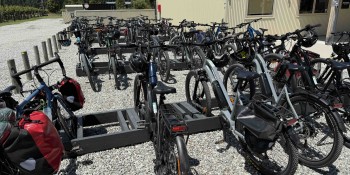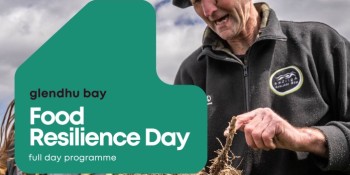DOC urges respect for environment as New Zealand travel spikes

More New Zealanders are getting into the great outdoors this summer than ever before, with campers and hikers making a beeline for the Abel Tasman National Park.
Data from the Department of Conservation shows some regions are busier than they were before Covid-19.
DOC's director-general, Lou Sanson, said places within three hours' drive of major population centres were experiencing high visitor growth, despite no international tourists.
Northland, Coromandel and the upper South Island were especially busy.
Tōtaranui in the Abel Tasman National Park was the country's most popular campsite, with more than 42,000 bed nights booked between the start of December and the end of February.
DOC said the Abel Tasman Coastal Track was shaping up to be the busiest Great Walk over summer, with more than double the bookings of any other Great Walk.
Abel Tasman Coastal Track shapes as the busiest Great Walk this summer, DOC says. Photo: RNZ / Tracy Neal
Campsites in Waikawau Bay in the Coromandel Peninsula took second place in the popularity stakes with 17,580 nights booked, followed by Northland campsites Otamure Bay, Uretiti Beach and Puriri Bay (Whangaruru).
DOC figures showed strong demand from people wanting to tackle the country's Great Walks. Occupancy rates were averaging 83 percent full at huts along these walks this summer.
Referring to hut occupancy, the Milford Track was full and the Rakiura, Kepler and Abel Tasman huts were close to full capacity.
DOC said that from late October to late November nearly three quarters of New Zealanders got outdoors. An interesting trend was the rise in numbers visiting island destinations within New Zealand, such as Post Office Wharf, Ulva Island/Te Wharawhara, Trig Track on Kāpiti Island and the Kaitoke Hot Springs Track, and Aotea/Great Barrier.
Visitor numbers plummet in national parks
However, more remote and traditionally high-volume internationally renowned destinations in national parks had seen a huge decline in visitors.
Numbers heading to Milford Sound / Piopiotahi were down by 72 percent. Franz Josef Glacier was down 66 percent, the Hooker Valley Track had seen a 52 percent drop in visitors and Roys Peak and Ben Lomond tracks were down 42 and 31 percent respectively.
Visitor numbers are down by 52 percent for the Hooker Valley Track in the Aoraki National Park. Photo: 123RF
Sanson said despite the buoyancy, it was disappointing to see that Kiwis were not obeying rules around protecting their own wildlife, or their environment.
"Sadly, we're still seeing people doing things that put our unique species at significant risk, such as feeding kea and disturbing seals, dolphins and penguins."
He had also hoped that Kiwis might lead the way in showing respect and care for Aotearoa, but reports of litter and human waste were arriving from the public and from rangers.
"We need to be mindful that 2020 has been very tough for many.
"It's even more vital this year to keep the place clean and tidy, stay home if you are unwell and demonstrate kindness and consideration to others."





















